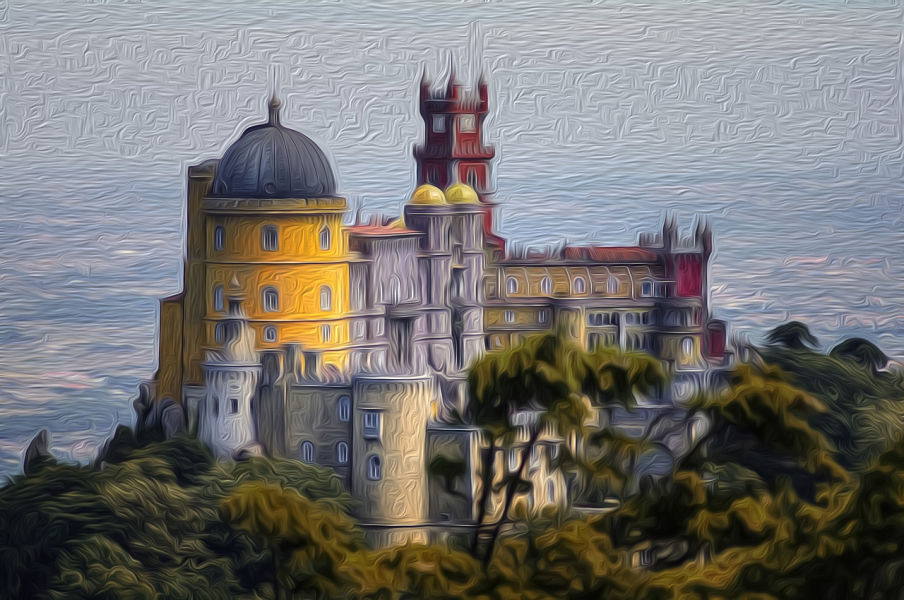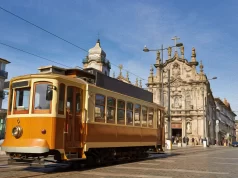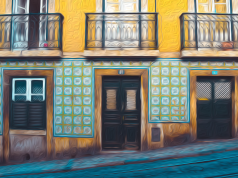Portugal is home to many world heritage sites that UNESCO has announced. They all tell something about Portugal’s past. You can see the traces of the colonial and medieval periods from these historical places.
There are 17 world heritage sites in Portugal. They are located in the north and center of Portugal as well as in Lisbon, Azores, and Madeira.
You’ll find more information about these unique heritages located in Lisbon below.
Best UNESCO World Heritage Sites in Portugal
You can find the best UNESCO heritage sites located in the north of Portugal below.

Historic Centre of Guimarães
Guimarães is the first capital of Portugal. It helped shape the national identity and language of Portugal, in the 12th century. In 2001, the area joined the World Heritage List of UNESCO. Here you can find the traces of both a medieval town and a modern city.
Historic Center of Porto
Joining the UNESCO World Heritage list in 1996, Porto has a rich history. The history of the city dates back to 2000 years back. It overlooks the Douro river, sitting on the hillsides.
Even walking through the streets makes you realize how rich history Porto has. You can see it through different styles of buildings. You’ll find traces of the Baroque, Roman, and Gothic influences in the city.
Sanctuary of Bom Jesus do Monte
The name of the temple translates into “Good Jesus of the Mount”. Located rather outside of Braga, the site overlooks the city. It is situated on the slopes of Mount Espinho. The site is the home of a fascinating church and pilgrimage.
To get to the church, you need to climb a staircase of 116 meters. Around 580 steps take place to reach the top. The devoted people in the past would climb the last part of the stairs on their knees.
The area joined the UNESCO World Heritage list in 2019.
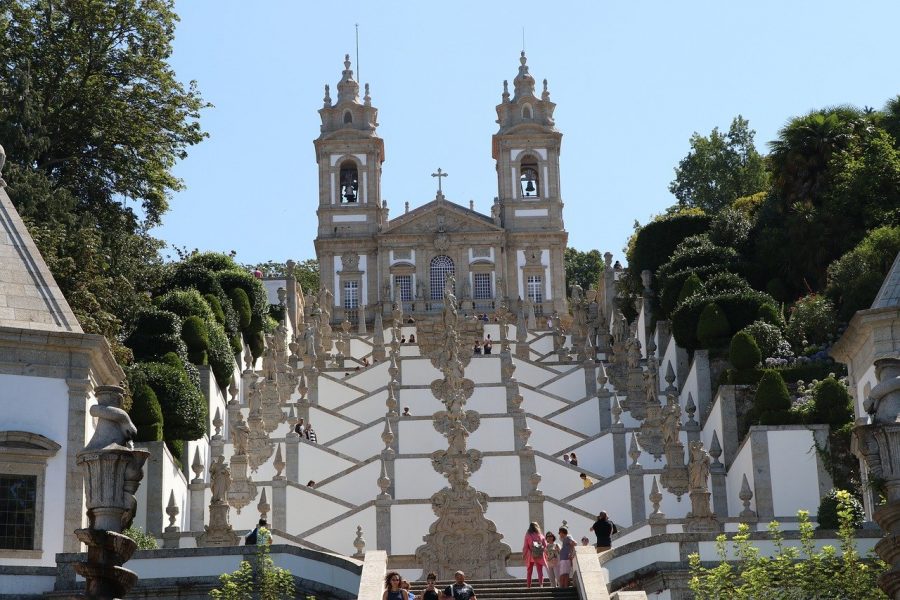
Alto Douro Wine Region
The region has been famous for wine production for around 2000 years. The vineyards cover an area of 24,600 hectares.
The valley slopes and vineyard terraces make the region more beautiful.
The place was included in the UNESCO World Heritage list in 2001.
Prehistoric Rock Art Site in the Côa Valley
This area takes place in the conjunction of Côa Valley in Portugal and Siega Verde in Spain. The place is an open-air site that represents some Paleolithic art.
It was originally included in the UNESCO World Heritage list in 1998. However, in 2010, archeologists found similar rock art in Siega Verde. So, it was expanded that year.
Now, you’ll be reading about the sites located in the center of Portugal below.
University of Coimbra – Alta and Sofia
From the early 12th to the middle of the 13th century, Coimbra was the capital of Portugal. The University of Coimbra, on the other hand, was founded in 1290. It served as the only university in Portugal until 1911. It is still one of the most outstanding universities worldwide.
You can find traces of the Baroque style and its rich history from the library and other buildings of the university.
It joined the World Heritage list of UNESCO in 2013.
Monastery of Alcobaça
Founded by King Alfonso I, the monastery dates back to the 12th century. The building reflects the Gothic Cistercian architecture.
It joined the UNESCO World Heritage list in 1989.
Convent of Christ in Tomar
Originally, the Knights Templar used this convent. It is both a castle and a convent. Its building started in 1160, and the convent was later included in it. Both the castle and the convent served as the headquarters of the Knights Templar until 1314. It covers an area of around 45 hectares.
The region joined the UNESCO World Heritage list in 1983.
Monastery of Batalha
Located in the district of Leiria, the Dominican monastery takes place in the Centro Region of Portugal. It was built to memorialize the victory over the Castilians at the war of Aljubarrota in 1385.
The monastery joined the World Heritage List of UNESCO in 1989.
You can find the other world heritage sites located in the Lisbon region below.
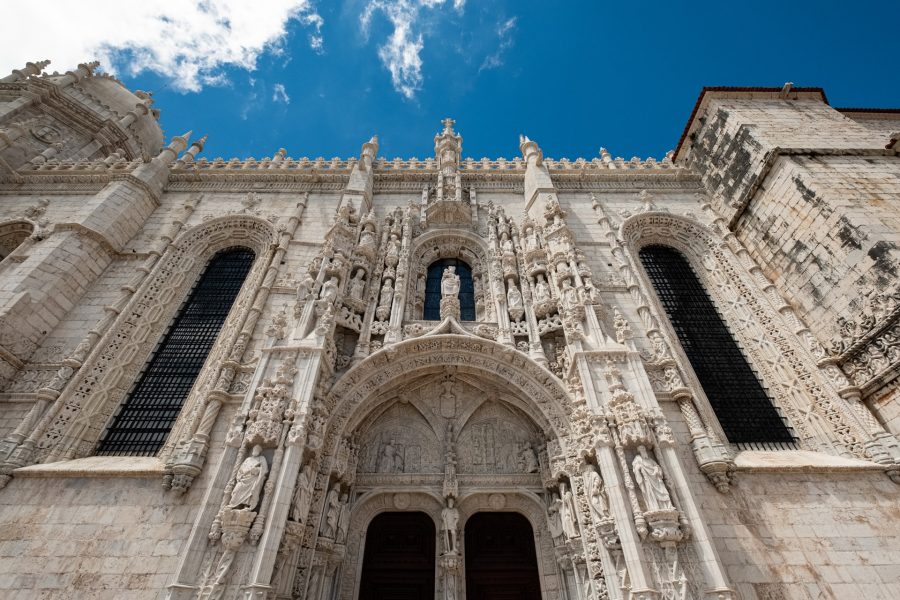
Monastery of Jerónimos and the Tower of Belém
Joining the UNESCO World Heritage list in 1983, the buildings reflect the art of the early 16th century. They are located in Lisbon’s port, on the banks of the Tagus River.
Tower of Belem protected Jeronimos Monastery Lisbon. After the Spanish navy defeated the Lisbon in 1580, the Belem Tower was used as prison.
Cultural Landscape of Sintra
The cultural landscape of Sintra offers a fantastic ambiance through the castle-like buildings as well as its location. It’s located in the hills, overlooking the view down below. The Portuguese kings and aristocracy once used this place to stay in.
The area includes both gardens and palaces. One of the most notable ones is the National Palace of Sintra.
It joined the UNESCO World Heritage list in 1995.
Royal Building of Mafra
The royal building of Mafra consists of a basilica, a royal palace, a convent, and a garden. King João V ordered it to be built. The aim was to compete with the great buildings of Spain and Rome.
It joined the UNESCO World Heritage list in 2019.
The following two sites take place in Alentejo.
Historic Centre of Évora
Called a city museum, the Historic Centre of Évora dates back to the 15th century. The place is one of the remnants of the country’s golden age. Its roots date back to Roman times.
It joined the UNESCO World Heritage list in 1986.
Garrison Border Town of Elvas and Its Fortifications
Elvas is a city in Portugal that was once a strategic location. The city takes place near the Portuguese-Spanish border, beyond the Tagus River. It is located between the two capitals, Lisbon and Madrid.
In this area, you’ll find military buildings, barracks, churches, and monasteries. The remains of the place date back to the 10th century. The fortification, on the other hand, started in 1640, when Portugal gained independence again.
The area joined the UNESCO World Heritage list in 2012.
You’ll find the two sites located in the Azores below.
Central Zone of the Town of Angra do Heroismo
The town of Angra does Heroismo takes place on the island of Terceira. It was also in a strategic position as a mid-Atlantic port. The region was an important port of call from the 15th until the 19th century. The fortifications of San Sebastião and San João Baptista are also particular examples of military architecture. These fortifications are as old as 400 years.
It joined the UNESCO World Heritage list in 1983.
The Landscape of the Pico Island Vineyard Culture
Another world heritage site is Pico, which is a volcanic island. It’s the second largest in the Azores archipelago. It joined the UNESCO World Heritage list in 2004.
Finally, you can find a heritage site located in Madeira below.
Laurisilva of Madeira
Laurisilva of Madeira is the only natural UNESCO World Heritage site in Portugal. The area holds relics of a laurel forest. The place takes its name from two Latin words: Laurus (Laurel) and Silva (Forest).
It’s also the largest surviving area of primary laurel forest. Around 90 percent of the area is woodland. You’ll see many trees belonging to the Lauraceae family growing here. It’s also home to a diversity of animals and plants as well.
It joined the UNESCO World Heritage list in 1999.
There you have it. Enjoy your stay in Lisbon!

